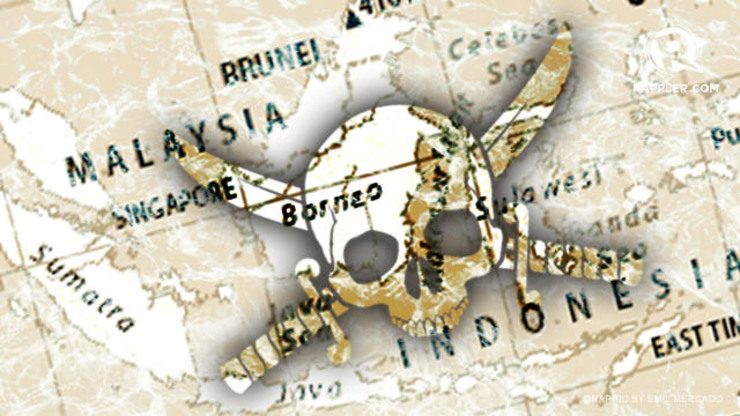SUMMARY
This is AI generated summarization, which may have errors. For context, always refer to the full article.

MANILA, Philippines – Southeast Asia now has more incidents of seafaring attacks than any other area in the world, with the Philippine-based bandit group Abu Sayyaf instrumental in a number of attacks, a report revealed Sunday, September 18.
Southeast Asia accounted for 178 piracy attacks in 2015, according to the International Maritime Bureau, the New York Times reported. The most well-known piracy hotspot, the Horn of Africa area (encompassing the Red Sea and Gulf of Aden region), had no reported incidents.
In addition, more than one-third of successful or attempted piracy attacks in the first half of 2016 were reported in Southeast Asia, the report said.
The Horn of Africa region has been a major piracy hotspot in recent years, but incidents in the area have gone down due to an intensive multinational effort to combat seafaring attacks in the area.
Southeast Asia is home to some of the world’s busiest sea lanes, where billions of dollars worth of cargo – from cars to oil – pass through each year, mostly on their way to some of the world’s biggest consumer markets in Asia.
The New York Times report said that a number of kidnappings can be attributed the Abu Sayyaf, but noted that several other criminal groups conduct illegal activities in the area.
The report noted that 25 Indonesian and 6 Malaysian seamen have been kidnapped by the group between March and August, mostly in “vital trade routes for coal barges in the Sulu Archipelago.”
Due to these incidents, in May, the Philippines, Indonesia, and Malaysia agreed to conduct naval security patrols in the area and open communication lines to respond to these incidents.
In the years prior, attacks were mostly on tankers carrying oil, but with the decline in oil prices globally, the target has shifted to ships carrying commercial cargo.
The Indonesian government, the report said, is becoming increasingly alarmed by the rise in piracy incidents, mainly because Indonesian tugboats are the main targets of the Abu Sayyaf.
Globally, piracy numbers have gone down to its lowest levels since 1995, according to the IMB, part of the International Chamber of Commerce.
The IMB said: “IMB’s global piracy report shows 98 incidents in the first half of 2016, compared with 134 for the same period in 2015. When piracy was at its highest, in 2010 and 2003, IMB recorded 445 attacks a year.”
It cited “continued deterrence” of Somali pirates off East Africa and “improvements” around Indonesia.
Nigeria, meanwhile, recorded the most number of piracy kidnappings so far in 2016 (24 out of 44 incidents globally), the IMB said. – KD Suarez/Rappler.com
Add a comment
How does this make you feel?
There are no comments yet. Add your comment to start the conversation.